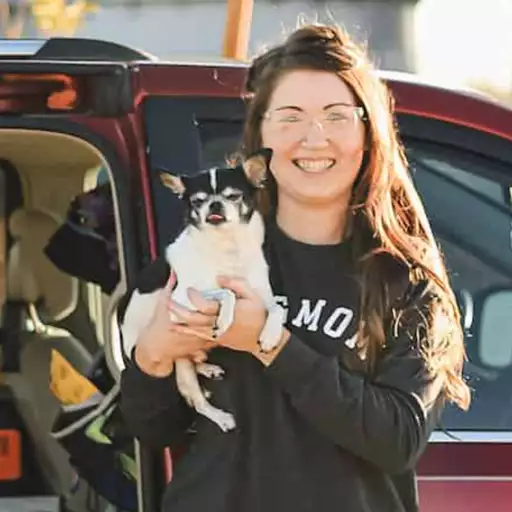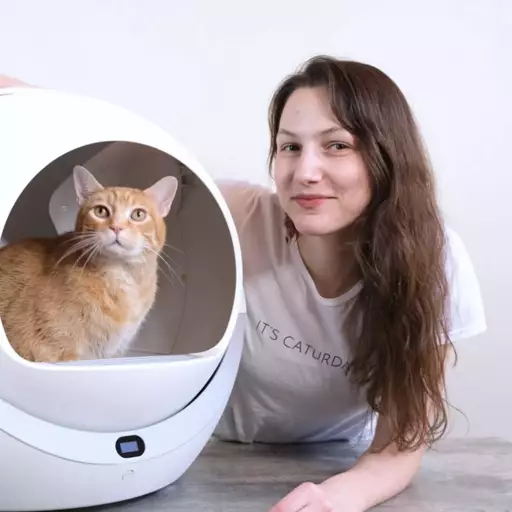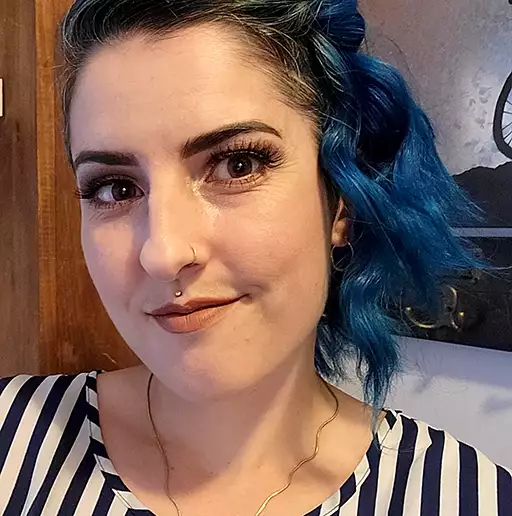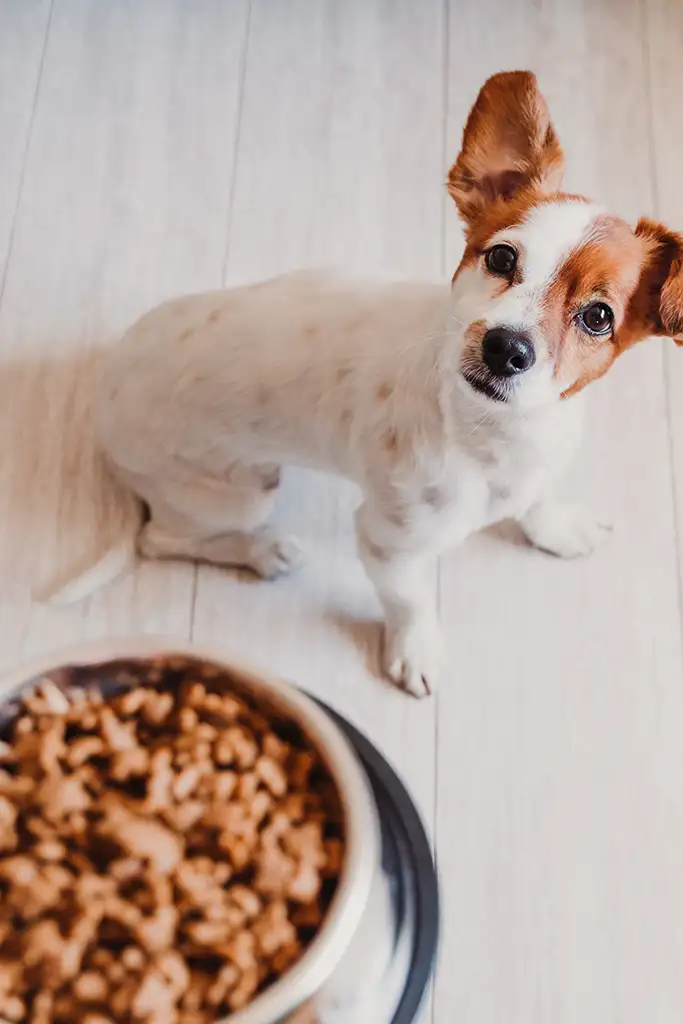Retro Pug Dog Breed Information & Pictures
Quick Guide
When thinking about Pugs, most people envision the famous ones — you know, Stella from Modern Family or the internet sensation known as Doug the Pug.
While pugs are known for their adorably squished-in faces and bugged-eyes, they’re also infamous for various health issues, including (but not limited to) breathing problems, vision troubles, and spine issues.
On the other hand, Retro Pugs are a mixed-breed alternative that provides the iconic face we know and love about these animals, but with less concern about inherent genetic diseases.
Though Retro Pugs are growing in popularity, many people aren’t familiar with this breed — or even know they exist. Here we’ll cover everything you need to know about bringing a Retro Pug into your family and more.
What is the Retro Pug?
The Retro Pug is a cross-breed of Pugs and Jack Russell Terriers to form a mixed-breed companion. As purebred dogs are known for a higher likelihood of inherited health disorders, combining the two pure breeds provides a mixed breed puppy — a “mutt,” if you will — that lessens the chance of genetic issues.
Pugs are brachycephalic dogs, which is a simple catch-all for pups that have compact faces. For its part, the Retro Pug features a longer snout for easier breathing and a mixed bag of characteristics from Pugs and Jack Russells. The combination of the two breeds can also result in deeper eye sockets to help lessen vision troubles.
Retro Pug Pictures
While there’s not a big aesthetic difference between traditional Pugs and Retro Pugs, there are still some small differences that you should note. Perhaps the most prominent is the longer snouts on Retro Pugs, but size- and shape-wise, the two breeds are relatively the same. However, don’t just take my word for the cuteness of this breed — check it out for yourself.
What is it Like Owning a Retro Pug?
Let’s take a look at a few key traits that make these dogs their adorable selves:
- It’s necessary to provide Retro Pugs with a healthy feeding regiment. This breed is prone to obesity and often has a few food allergies or intolerances, so it’s essential to feed them high-quality pet foods. You should incorporate additional supplements, such as bone and joint enhancement chews, to round out the dogs’ nutritional needs for extra support.
- Retro Pugs need physical exercise (walking, running outside) and mental stimulation (playing with toys) as much as they need food and water. Retro Pugs aren’t the most athletically-inclined breed, so about 30 minutes to one hour of playtime per day is sufficient. Of course, that’s just the minimum — if your dog’s up to it, you should play with them as much as possible.
- Retro Pugs require a fair amount of upkeep with grooming, which is surprising for a short-haired breed. They have longer fur that requires brushing once or twice a week and washed once or twice a month at the most. Additionally, Retro Pugs are prone to dental issues; it’s best to establish an oral hygiene regimen early.
- Finally, Retro Pugs are known as one of the “velcro” breeds, which are dogs that quickly become attached to their owners and want to be by their side always. They’re a needy breed and are more of a fair-weather dog — Retro Pugs aren’t fans of inclement weather.
- Though this breed is less prone to breathing issues, it’s crucial to ensure the accessories you purchase for your Retro Pug are correctly fitted. Harnesses, collars, and even dog clothes should be loose to extenuate breathing problems. As a general rule, a properly-fitted collar or harness should be flexible enough to the point where you can comfortably slip two fingers underneath.
Retro Pug Breed Information
Before bringing a Retro Pug into your home, keep in mind this breed gets its lifespan from the Jack Russell Terrier genetics, meaning the average lifespan for this breed is over 16 years (barring no underlying health issues, such as cancer). It’s a commitment to raise this sort of dog, and, as a potential pet parent, you should know what you’re in for when a Retro Pug becomes a family member.
While the purpose of Retro Pug breeding is to eliminate breathing and vision problems, some breeders produce pugs that combat these issues better than others. To help avoid those two significant health issues, be sure to look for puppies that have deeper-set eyes and longer snouts. Remember, you’re bringing this animal into your life for at least a decade — don’t rush your decision-making process just because you’re eager to purchase.
In general, there are many nuances to this mixed breed. Retro Pugs have longer snouts, more significant color variations, deeper eyes, thinner bodies with long legs, and long, floppy ears compared to purebred Pugs and Jack Russell Terriers. Energy levels vary as well. Here we’ve outlined some more detailed information about Retro Pugs.
How Much does a Retro Pug Cost?
There’s no set price for Retro Pugs, and it ultimately comes down to the individual breeder’s discretion. In general, though, purebred pugs range from $600 to $6000, depending upon lineage but on average cost about $1500. For its part, Jack Russells cost $700 to $1200, so it’s best to anticipate paying about $1500.
Be wary when choosing a breeder, though. If a price seems too good to be true, it usually is. Before exchanging money or agreeing to purchase a dog, ask to visit the dog in person, and see where its surroundings. A reputable breeder will have no problem inviting you over and allowing you to inspect the dog’s living arrangement for yourself, as well as ensure there’s a dog available.
A reputable breeder’s house and animal storage area should be as clean as it can be, considering the number of puppies lying around. There should be plenty of toys and stimulation provided to the puppies, and make sure to take in the pup’s overall energy. It’s easy to deceive physical settings, but the pups won’t lie. Be cautious of dogs that continually appear lethargic, as it can signal underlying health issues.
Are Retro Pugs Good Apartment Dogs?
Retro Pugs are great apartment dogs because they’re compact — hitting a maximum of 18 pounds — and don’t require much in the exercise department. Of course, daily walks are encouraged, but there’s no need for a backyard or ample room for Retro Pugs to run around.
However, they are known to molt and, like most shedding dogs, can cover houses quickly with hair. As long as you’re on top of brushing and grooming, this shouldn’t be an issue. They’re incredibly loving and family-oriented, so don’t expect to have much personal space. The breed on its own doesn’t require much personal space, and Retro Pugs love to sleep.
What are Some Common Retro Pug Health Issues?
While Retro Pugs help eliminate some health concerns associated with purebred Pugs, this breed isn’t perfect — no dogs are. In general, the health issues Retro Pugs may encounter include but aren’t limited to:
- Allergies
- Shoulder and hip dysplasia
- Skin cancer
- Dental problems
- Epilepsy
Are Retro Pugs Hard to Train?
Retro Pugs are intelligent and eager to please their owners, so those qualities alone give you a leg up with their training. For these reasons, training sessions will seem less of a chore to them and more like an opportunity for bonding — these pups are ready to impress.
Retro Pugs are fast learners and, like all other beads, respond best to positive reinforcement and treats. However, treating often leads to overfeeding, so be cautious about the quality and quantity of treats you’re using as a reward. Treats should be low calorie and feature natural ingredients when possible.
Keep in mind that, given their strong attachment, Retro Pugs often suffer from separation anxiety when they’re apart from their owners for long periods. While it’s not possible to be with your dog 24/7, there are options to keep them entertained. Puzzle toys help stimulate the pup’s brain and redirect the focus, while treat toys (stuffed with healthy goodies) can provide a welcomed distraction.
What Colors Do Retro Pugs Come In?
One of the coolest things about committing to buying a puppy from a litter is anticipating its color. Purebred Pugs typically feature one of two colorings: pure black or fawn with black snouts and ears. For their part, retro pugs are darker — bordering on tan — due to the Jack Russell Terrier lineage, and they feature more black accents around their faces and down their backs.
How Big Do Retro Pugs get?
Jack Russell Terriers and purebred Pugs are small breeds on their own, so their mixed offsprings don’t grow too large. Overall, expect a smaller breed. Jack Russell Terriers reach 10 to 15 inches tall with a healthy weight between 13 and 17 pounds, while pugs will fall between 9 and 12 inches tall and come in on the heavier end, weighing between 14 and 18 pounds when fully grown.
It’s impossible to predict the exact measurements of Retro Pugs, as it depends on which parent’s traits are more prevalent after breeding. In general, you can use those measurements as a guideline for what to expect. To be on the safer side, anticipate a 15-inch Retro Pug that weighs 18 pounds — it’s better to expect big and receive small than be overwhelmed when the pup’s full grown.
Are Retro Pugs Good with Kids?
Retro Pugs are great with kids, as long as they’re appropriately socialized. Due to their friendly and loving nature, Retro Pugs make the perfect companions for children. However, don’t take their playful disposition at face value — make sure to supervise Retro Pugs when they’re playing with children, especially younger ones.
Kids don’t realize dogs don’t enjoy having their ears pulled or their tails tugged, so you need to acclimate children to dogs as much as you need to get dogs comfortable around children. It’s helpful for you, as an adult, to make common gestures children would make to your Retro Pug, so it learns to control its response if being grabbed the wrong way.
5 Fun Facts You Should Know About Retro Pugs
- In Germany, Retro Pugs are known as “retro mops,” as purebred pugs are called the Mopshond in the German language.
- There’s a British movement that advocates for the breed as alternatives for purebred pugs — The Campaign for the Responsible Use of Flat-Faced Animals — and pushed to allow Retro Pugs in Crufts, an international dog show held in the United Kingdom.
- The goal for breeding Retro Pugs is to have 80 to 90 percent of its genetics come from a purebred Pug.
- However, experts consider the Retro Pugs an inconsistent breed, as their physical features and personality vary slightly from litter to litter depending upon which parent pup’s genetics are more prevalent.
- Even though Retro Pugs are a mixed breed, purebred Pugs’ original face structure resembled Retro Pugs more than modern Pugs. Essentially, breeders are trying to take Retro Pugs back to their royal English roots.
Conclusion
Retro Pugs are excellent dogs for apartment settings and smaller houses and condos, as the breed doesn’t require much exercise or indoor space to be comfortable. Though easily-trained, Retro Pugs tend to have higher energy if the Jack Russell Terrier traits shine through, so some litters of Retro Pugs may take more effort than others. In general, Retro Pugs make great family pets.
These pups are the perfect alternative if you want the general aesthetic of a purebred with less concern for the prevalent health issues. They’re a playful and loving breed that’s eager to please, and though they may be higher energy due to Jack Russell Terrier traits, these pups ultimately just want to give love and be loved.










